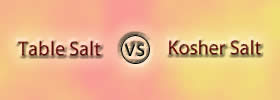Difference between Ionic and Covalent Bond
Key difference: An ionic bond is a chemical bond between two dissimilar (i.e. a metal and a non-metal) atoms in which one atom gives up an electron to another. A covalent bond is another strong chemical bond. It takes place been similar atoms (i.e. two non-metals). In a covalent bond the two atoms come together to share the electron, instead of an atom taking an electron from another.
 In order to create molecules or compounds, atoms form bonds with each other. A bond is a chemical process born from an attraction between two or more atoms. The chemical bond is in fact caused by the electrostatic force of attraction between opposite charges, either between electrons and nuclei, or as the result of a dipole attraction. The strength of these chemical bonds can be loosely classified as ‘strong bonds’ or ‘weak bonds’. The two common examples of ‘strong bonds’ are the ionic bonds and covalent bonds.
In order to create molecules or compounds, atoms form bonds with each other. A bond is a chemical process born from an attraction between two or more atoms. The chemical bond is in fact caused by the electrostatic force of attraction between opposite charges, either between electrons and nuclei, or as the result of a dipole attraction. The strength of these chemical bonds can be loosely classified as ‘strong bonds’ or ‘weak bonds’. The two common examples of ‘strong bonds’ are the ionic bonds and covalent bonds.
An ionic bond is a chemical bond between two dissimilar (i.e. a metal and a non-metal) atoms in which one atom gives up an electron to another. Hence both atoms become ions as one atom has one electron less, while the other has an extra. The metal ion which lost an electron has a positive charge. The non-metal ion which gained an electron has a negative charge. As opposites attract, these ions are then strongly attracted to each other, so strongly that they become bonded.
Ionic compounds are usually in the form of solids, i.e. salts. They are highly soluble in water and have a high melting point. When they are in water, they also have a high electrical conductivity.
 A covalent bond is another strong chemical bond. It takes place been similar atoms (i.e. two non-metals). In a covalent bond the two atoms come together to share the electron, instead of an atom taking an electron from another. Covalent bonding is the stable balance of attractive and repulsive forces between two atoms as they share the electron. Covalent bonds can be further classified into single, double, and triple covalent bonds respective of how many electrons are shared. Each electron shared forms one bond.
A covalent bond is another strong chemical bond. It takes place been similar atoms (i.e. two non-metals). In a covalent bond the two atoms come together to share the electron, instead of an atom taking an electron from another. Covalent bonding is the stable balance of attractive and repulsive forces between two atoms as they share the electron. Covalent bonds can be further classified into single, double, and triple covalent bonds respective of how many electrons are shared. Each electron shared forms one bond.
Covalent bonding includes many kinds of interaction, including σ-bonding, π-bonding, metal-to-metal bonding, agostic interactions, and three-center two-electron bonds. When an atom has an electron in its outer shell and another atoms requires an electron to fill its outer shell, the two atoms some together to share the electron. Hence, both the atoms end up have a full outer shell and correspondingly a stable electronic configuration.
Chemical bonds are made so that the atom can have a full outer shell, as a full outer shell means a stable electronic configuration. In an ionic bond, when the metal atom has a single electron in its outer shell and the non-metal needs an electron to complete its outer shell, the metal atom gives its electron to the non-metal. Similarly, in the covalent bond, they share the electron equally.
|
|
Ionic Bond |
Covalent Bond |
|
Definition |
A chemical bond between two dissimilar atoms in which atom gives up an electron to another. |
A covalent bond is a chemical bond that involves the sharing of electrons between two similar atoms. |
|
Occurrence |
A metal and a non-metal |
Two non-metals |
|
Polarity |
High |
Low |
|
Shape of molecule |
No definite shape, lattice structures |
Definite shape |
|
Electrical conductivity |
High |
Usually none |
|
Thermal conductivity |
High |
Usually low |
|
Melting point of substance |
Varies, but usually higher than covalent compounds |
Varies, but usually lower than ionic compounds |
|
Boiling point of substance |
High |
Varies, but usually lower than ionic compounds |
|
Solubility in water |
High |
Varies, but usually lower than ionic compounds |
|
State of substance at room temperature |
Usually solid |
Solid, liquid, gas |
Image Courtesy: daviddarling.info, wikipedia.org









Comments
Very helpful, explained in the most simple way.
T.m kodi
Tue, 06/23/2015 - 22:39
amazing differences
AMBER SIDDIQ
Wed, 04/23/2014 - 18:05
was very helpful for me in making my project.
no name
Fri, 04/18/2014 - 18:53
Extra ordinary
Anane Emmanuel
Sat, 01/18/2014 - 18:57
Add new comment